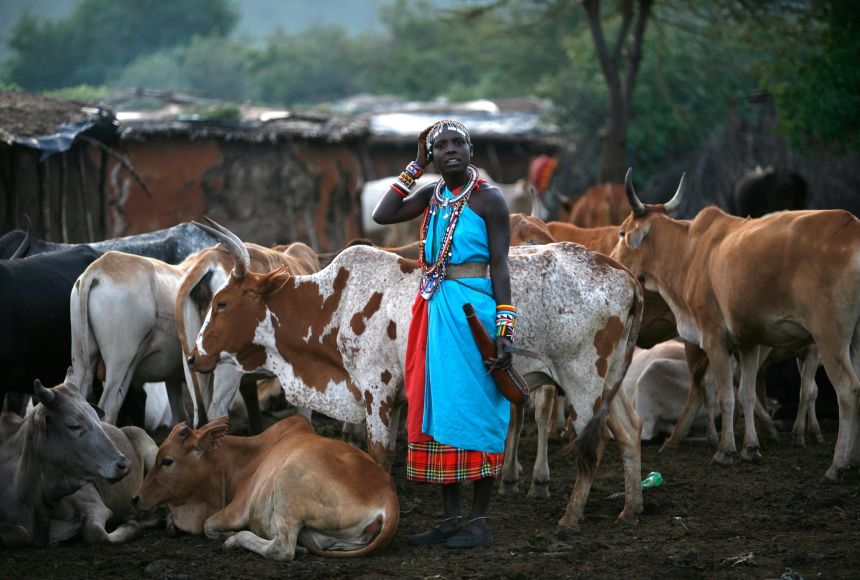ARTICLE
leveledARTICLE
The Cattle Economy of the Maasai
The Cattle Economy of the Maasai
The Maasai people of East Africa built a pastoral way of life around their cattle, but the modern market economy has threatened to override the economy of bovine exchange.
Grades
3 - 12
Subjects
Geography, Human Geography, Social Studies, Economics
Image
Maasai Woman and Cattle
While Maasai men are responsible for protecting and herding the cattle, women are in charge of milking the cattle as well as looking after the home and children.
Photograph by Ton Koene

Media Credits
The audio, illustrations, photos, and videos are credited beneath the media asset, except for promotional images, which generally link to another page that contains the media credit. The Rights Holder for media is the person or group credited.
Director
Author
Production Managers
Program Specialists
Producer
other
Last Updated
October 30, 2024
For information on user permissions, please read our Terms of Service. If you have questions about how to cite anything on our website in your project or classroom presentation, please contact your teacher. They will best know the preferred format. When you reach out to them, you will need the page title, URL, and the date you accessed the resource.
Media
If a media asset is downloadable, a download button appears in the corner of the media viewer. If no button appears, you cannot download or save the media.
Text
Text on this page is printable and can be used according to our Terms of Service.
Interactives
Any interactives on this page can only be played while you are visiting our website. You cannot download interactives.
